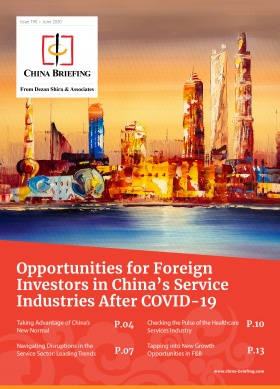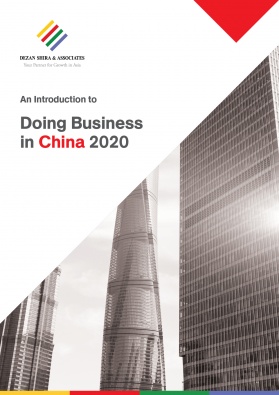Foreigners’ Special Visa Application and Entry into China: 3 Case Studies
By: Fuki Fu, Human Resources, Dezan Shira & Associates’ Shanghai Office
Editor: Zoey Zhang
In view of the rapid global spread of COVID-19, China issued a travel ban policy in March that suspended the entry of most foreigners. Starting March 28, 2020, only foreign nationals holding diplomat, service courtesy, C visas, or visas issued after March 28 have been allowed to enter this country.
Now that the pandemic is in remission in some countries, China is gradually loosening its borders. In August, it began allowing citizens from 36 European countries to apply for new visas free of charge at local Chinese embassies or consulates in their country, as long as they still hold valid Chinese visas or residence permits (including work permit or permit for family reunion and personal matters).
However, other foreigners who are unqualified for the above policy may still find themselves stuck outside China. Still, they can try to apply for visas at Chinese embassies or consulates if they are engaged in “necessary economic, trade, scientific, or technological activities” in China or need to enter the country “out of emergency humanitarian needs.”
Here, the criteria for determining whether an applicant meets “necessary economic, trade, scientific, or technological activities or out of emergency humanitarian needs” are generally assessed by intergovernmental and non-governmental organizations in China and determined by Chinese embassies and consulates abroad. And the visas applied for would be special visas – like M-visas for business purpose and S2-visas for family members.
Since the announcement of China’s travel ban policy, Dezan Shira & Associates (hereafter DSA) has been keeping a close eye on the travel policy developments, assisting foreigners with special visa applications, and helping them enter China.
Based on our experience, we have identified the following types of persons as eligible applicants of China’s M-visas or S2-visas:
- Key employees in important trade/economic sectors of a company in China;
- Key persons in the necessary scientific/technology activities of a company in China; and
- Family members of the foreigner(s) who has been working in China.
Below, we would like to share three typical cases for your better understanding of the conditions needed for a successful special visa application. (The subject names have been changed for the sake of privacy.)
Case 1 – newly hired general manager allowed to enter China for the first time
Mr. Tony White lived in the US and had never been to China. In May, he received an offer from a Chinese company to be the company’s general manager (GM).
The company had just lost its former GM and desperately needed a new GM to take over the job and consolidate its businesses in China.
Mr. Tony White was considered an irreplaceable candidate for the GM position, and the company was eager to get him on board as quick as possible, so that Mr. White could undertake the company’s internal urgent affairs and important businesses.
With several rounds of coordination and application, Mr. Tony smoothly obtained the PU letter from Shanghai’s Foreign Affairs Office (FAOs) and entered China with an M-visa in June.
Case 2 – legal representative and GM allowed to return to China with family members
Mr. Givannie Guilot is an Italian who had been living in China for two years. He is also the legal representative and general manager of a company in China.
He and his family were taking a holiday overseas and were stuck outside China due to the global outbreak of COVID-19 and then the abrupt travel ban policy. Mr. Guilot held a valid residence permit but was still not allowed back into China.
Since pressing business projects needed to be decided by Mr. Guilot and the normal operation of the company needed to be led by him, Mr. Guilot’s company contacted a DSA specialist to assist Mr. Guilot with his special visa application.
Luckily, in August, Mr. Guilot and his family members all received the PU letter from the FAO. Mr. Guilot successfully entered China with an M-visa and his family with S2-visas.
Case 3 – family member of China-based foreigner allowed to enter China
Mrs. Julia William was living in the UK but her husband has been working in a company in China for a period.
She was found pregnant and had been separated from her husband for three months since the COVID-19 pandemic. The reality unfortunately did not allow her husband to leave China and stay by her side. Under this circumstance, the company of her husband contacted DSA to apply for the PU letter for Mrs. William.
DSA then helped submit the required materials and some additional information, including Mr. and Mrs. William’s marriage certificate, the proof of pregnancy of Mrs. William, and the situation explanation letter, to the FAO and coordinated the communication with the government staff in charge.
Considering Mrs. William’s case was “out of emergency humanitarian needs”, the FAO finally issued the PU letter to Mrs. William. This month, she successfully entered China with an S2-visa and reunited with her husband in China.
Observations on the China visa application process
To apply for special visas at the FAO in China, there will be rounds of material submission and coordination. Successful applicants are usually on key and irreplaceable positions of important economic, trade, scientific, or technological sectors of a company or an institution in China, or their need of entering China is out of emergency humanitarian needs. Application letters need to specify in detail the particular circumstances of the parties concerned and the urgency as well as necessity of the entry of the persons concerned.
Quarantine requirements for foreigners to enter China
On July 21, 2020, Chinese authorities announced that they would require all airport arrivals from or transfering via some foreign countries to complete a nucleic acid test within five days before boarding. You may check the listed countries on the following official link for the real-time updates: https://hr.cs.mfa.gov.cn/help_two/help-two/gj.html.
The test should be carried out in the institutions designated or recognized by Chinese embassies abroad. And the foreigner needs to apply for declaration of health status at the Chinese Embassy or consulate by presenting the negative nucleic acid test results or apply for green health codes with “HS” mark. Relevant airlines are responsible for checking passengers’ Health Declaration Letter or green health code before boarding. Passengers will be denied boarding if they fail to meet the stipulated requirements.
After landing in China, foreigners will be subject to a nucleic acid test again according to the local requirements of the destination. Of course, there would be a 14-day quarantine. Generally, it’s a 14-day centralized quarantine, but if the foreigners are destined for Shanghai, Zhejiang, Jiangsu, or Anhui and have a fixed residence and meet the conditions of home quarantine and health observation, they could apply for a seven-day centralized quarantine plus seven-day home quarantine. Possible further nucleic acid test results can be carried out after phased quarantine.
After completing the quarantine period, the foreigners can resume their normal life and work. Moreover, for the foreigners who hold valid work permit and residence permit, the M-visa or S2-visa could be transferred to the residence permit, which should be applied for at the Exit-Entry Administration Bureau of Public Security Bureau (PSB).
About Us
China Briefing is written and produced by Dezan Shira & Associates. The practice assists foreign investors into China and has done so since 1992 through offices in Beijing, Tianjin, Dalian, Qingdao, Shanghai, Hangzhou, Ningbo, Suzhou, Guangzhou, Dongguan, Zhongshan, Shenzhen, and Hong Kong. Please contact the firm for assistance in China at china@dezshira.com.
We also maintain offices assisting foreign investors in Vietnam, Indonesia, Singapore, The Philippines, Malaysia, Thailand, United States, and Italy, in addition to our practices in India and Russia and our trade research facilities along the Belt & Road Initiative.
- Previous Article Hong Kong’s US-Bound Exports to be Labeled ‘Made in China’: What Does it Mean?
- Next Article Optimizing Your China Accounting and HR Processing with Cloud Technology – New Issue of China Briefing Magazine






